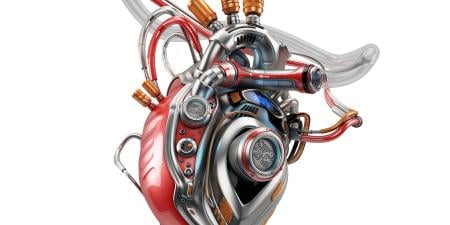Opinion 2.20 - Withholding or Withdrawing Life-Sustaining Medical Treatment
The social commitment of the physician is to sustain life and relieve suffering. Where the performance of one duty conflicts with the other, the preferences of the patient should prevail. The principle of patient autonomy requires that physicians respect the decision to forgo life-sustaining treatment of a patient who possesses decision-making capacity. Life-sustaining treatment is any treatment that serves to prolong life without reversing the underlying medical condition. Life-sustaining treatment may include, but is not limited to, mechanical ventilation, renal dialysis, chemotherapy, antibiotics, and artificial nutrition and hydration.
There is no ethical distinction between withdrawing and withholding life-sustaining treatment. A competent, adult patient may, in advance, formulate and provide a valid consent to the withholding or withdrawal of life-support systems in the event that injury or illness renders that individual incompetent to make such a decision. A patient may also appoint a surrogate decision maker in accordance with state law.
If the patient receiving life-sustaining treatment is incompetent, a surrogate decision maker should be identified. Without an advance directive that designates a proxy, the patient’s family should become the surrogate decision maker. Family includes persons with whom the patient is closely associated. In the case when there is no person closely associated with the patient, but there are persons who both care about the patient and have sufficient relevant knowledge of the patient, such persons may be appropriate surrogates. Physicians should provide all relevant medical information and explain to surrogate decision makers that decisions regarding withholding or withdrawing life-sustaining treatment should be based on substituted judgment (what the patient would have decided) when there is evidence of the patient’s preferences and values. In making a substituted judgment, decision makers may consider the patient’s advance directive (if any); the patient’s values about life and the way it should be lived; and the patient’s attitudes towards sickness, suffering, medical procedures, and death. If there is not adequate evidence of the incompetent patient’s preferences and values, the decision should be based on the best interests of the patient (what outcome would most likely promote the patient’s well-being).
Though the surrogate’s decision for the incompetent patient should almost always be accepted by the physician, there are four situations that may require either institutional or judicial review and/or intervention in the decision-making process: (1) there is no available family member willing to be the patient’s surrogate decision maker; (2) there is a dispute among family members and there is no decision maker designated in an advance directive; (3) a health care provider believes that the family’s decision is clearly not what the patient would have decided if competent; and (4) a health care provider believes that the decision is not a decision that could reasonably be judged to be in the patient’s best interests. When there are disputes among family members or between family and health care providers, the use of ethics committees specifically designed to facilitate sound decision making is recommended before resorting to the courts.
When a permanently unconscious patient was never competent or had not left any evidence of previous preferences or values, since there is no objective way to ascertain the best interests of the patient, the surrogate’s decision should not be challenged as long as the decision is based on the decision maker’s true concern for what would be best for the patient. Physicians have an obligation to relieve pain and suffering and to promote the dignity and autonomy of dying patients in their care. This includes providing effective palliative treatment even though it may foreseeably hasten death.
Even if the patient is not terminally ill or permanently unconscious, it is not unethical to discontinue all means of life-sustaining medical treatment in accordance with a proper substituted judgment or best interests analysis.
Opinion 2.225 - Optimal Use of Orders-Not-to-Intervene and Advance Directives
More rigorous efforts in advance care planning are required in order to tailor end-of-life care to the preferences of patients so that they can experience a satisfactory last chapter in their lives. There is need for better availability and tracking of advance directives and more uniform adoption of form documents that can be honored in all states of the United States. The discouraging evidence of inadequate end-of-life decision making indicates the necessity of several improvement strategies:
(1) Patients and physicians should make use of advisory as well as statutory documents. Advisory documents aim to accurately represent a patient’s wishes and are legally binding under law. Statutory documents give physicians immunity from malpractice for following a patient’s wishes. If a form is not available that combines the two, an advisory document should be appended to the state statutory form.
(2) Advisory documents should be based on validated worksheets, thus ensuring reasonable confidence that preferences for end-of-life treatment can be fairly and effectively elicited and recorded, and that they are applicable to medical decisions.
(3) Physicians should directly discuss the patient’s preferences with the patient and the patient’s proxy. These discussions should be held ahead of time wherever possible. The key steps of structuring a core discussion and of signing and recording the document in the medical record should not be delegated to a junior member of the health care team.
(4) Central repositories should be established so that completed advisory documents, state statutory documents, identification of a proxy, and identification of the primary physician can be obtained efficiently in emergency and urgent circumstances as well as routinely.
(5) Health care facilities should honor, and physicians should use, a range of orders on the Doctor’s Order Sheet to indicate patient wishes regarding avoidable treatments that might otherwise be given on an emergency basis or by a covering physician with less knowledge of the patient’s wishes. Treatment avoidance orders might include, along with a Do Not Resuscitate (DNR) order, some of the following: Full Comfort Care Only (FCCO); Do Not Intubate (DNI); Do Not Defibrillate (DND); Do Not Leave Home (DNLH); Do Not Transfer (DNTransfer); No Intravenous Lines (NIL); No Blood Draws (NBD); No Feeding Tube (NFT); No Vital Signs (NVS); and so forth. One common new order, Do Not Treat (DNT), is specifically not included in this list, since it may unintentionally convey the message that no care should be given and the patient may lose the intense attention due to a dying person; FCCO serves the same purpose without the likely misinterpretation. As with DNR orders, these treatment avoidance orders should be revisited periodically to ensure their continued applicability. Active comfort care orders might include Allow Visitors Extended Hours (AVEH) and Inquire About Comfort (IAC) b.i.d. (twice daily).



